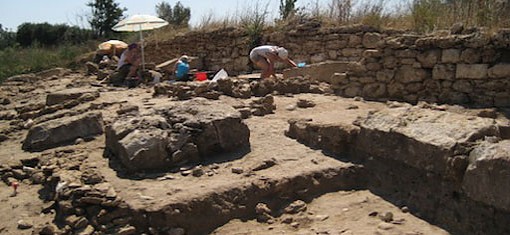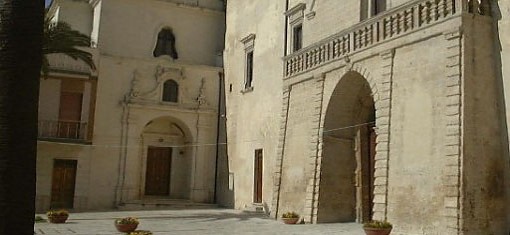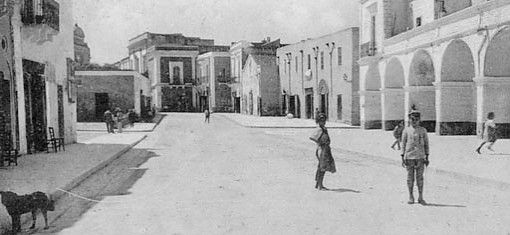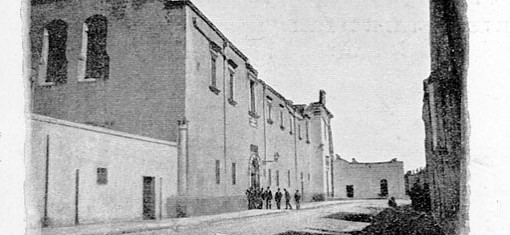Historical notes about Latiano
Historical notes about Latiano
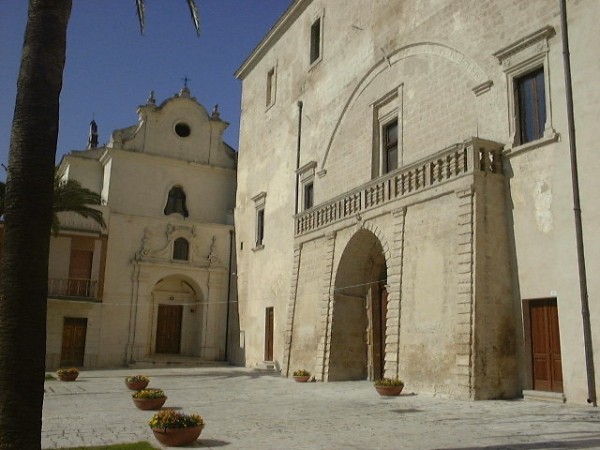 Latiano was founded during the Middle Ages. Sources of that time (and of the following) show the presence in its present-day territory of a few hamlets : Cotrino, Malignano (founded in 1092), San Donato and a Latinianum reported on the Chronicon Volturnense of 947. The latter site was probably the first centre of Latiano subsequently enlarged with the other sites cited above. The first certain information about the feudal successions in Latiano, refer to the end of the XIII century, when “ in 1270 P. Hugot receives as dowry from his wife Isabella d’Anfi the estate of Latiano which will be granted in 1300 to the monastery of Saint Pietro and Andrea in Insula Parva”. After that, the clergymen of Saint Andrea of the Island of Brindisi sold most of their territory to other landowners. Few years later, Latiano becomes property of Mabilia de Baro, widow of Adamo de Tremblayo. The estate will belong to the de Baros until 1341.
Latiano was founded during the Middle Ages. Sources of that time (and of the following) show the presence in its present-day territory of a few hamlets : Cotrino, Malignano (founded in 1092), San Donato and a Latinianum reported on the Chronicon Volturnense of 947. The latter site was probably the first centre of Latiano subsequently enlarged with the other sites cited above. The first certain information about the feudal successions in Latiano, refer to the end of the XIII century, when “ in 1270 P. Hugot receives as dowry from his wife Isabella d’Anfi the estate of Latiano which will be granted in 1300 to the monastery of Saint Pietro and Andrea in Insula Parva”. After that, the clergymen of Saint Andrea of the Island of Brindisi sold most of their territory to other landowners. Few years later, Latiano becomes property of Mabilia de Baro, widow of Adamo de Tremblayo. The estate will belong to the de Baros until 1341.
In 1407, Antonello de Alamo purchased from the Inland Revenue Latiano Castle and the uninhabited land of Cotrino for the amount of 1500 golden ducats. The de Alamos will be the owners till 1511. Through a marriage the estate went to the Francones (1511-1611), an aristocratic family from Naples, with relations in Lecce . Thanks to this family the village developed a new aspect: the Mother church was renovated and for the first time the Dominican monastery, with the school of Philosophy and Theology and the Workhouse were built.
The de Santis (1611-1641) succeeded the Francones, a Neapolitan family who purchased the estate of Latiano thanks to the incomes of the business done in Rome. The de Santis overloaded the economic situations of the Latianesi by imposing high taxes, even though the second baron de Santis, Fabrizio, renovated the small church of the Annunziata or of Saint Antonio, subsequently enlarged.
When the Imperialis (1641-1806) purchased the estate, it began a change in the history of the village. Coming from Genoa, enlightened gentlemen and owners of much wealth and other sources of income they do not need to harass their subjects. Instead, they could create a useful collaboration. In fact, thanks to them, there is an enlargement of the village and the town-planning renovation. The castle became an aristocratic residence, the chapel of the marquis dedicated to the Addolorata was built, the piazza Nuova became the economic and social centre of the village, the latter extended towards the west and the Vicariate of the Dominicans became the Monastery with elective prior. They also built Social works such as Case per Orfane, located in the street by the same name – orfane (orphan)- and helped the poor with economic contributions and dowries to young ladies.
After the end of the Middle Ages, the history of Latiano became part of the kingdom of Naple; at first Latiano was under the Murattiana’s domination, then under the Bourbons and finally it was included in the kingdom of Italy.
During XIX, XX centuries, the village was enlarged a lot, living especially on a modern agriculture and lately on a mere cottage industry. The population has exceeded 15.000 inhabitants who generally live in a good economic situation.
Objects naming and their etymology
Anphoriskos (… n.), abbr. of …, vase with two handles and an ordinarily neck, used to pour liquids.
Bombylios (…….., n.) a gurgling vase with a narrow neck (from the Greek…., roar, and ….., I dissolve) while pouring the liquids.
Cratere (…., n. from……., I mix): goblet, a large vase where wine and water were mixed. Then, this mixture was poured through smaller vases into glasses. Variable shape, usually very flared, a bell-bottomed vase with two horizontal handles.
Guttus (n, from…, drop) : jug with a very narrow neck where the liquids such as oil, vinegar, wine fell in drops. Mostly used during the libations in order to pour drops of wine into the patera. Also called biberon.
Hydria (n. f., from…, water): a common type of Greek vase, used to carry water, oval base. Usually very large with three handles, one upright useful for the transport and the other two to pour the liquids.
Kantharos ( n.), vase to drink, with two tall handles. In Greece, it was an attribute of the god Dyonisus.
Lekithos (n. f.), a Greek vase used to contain ointments and perfumes, usually in a lengthy shape long and narrow neck, flared on top, with an upright handle. This type of vase was one of the first to be decorated with painted pictures. Sometimes, it was moulded on animal shapes. L. ariballica (from…, n., bag which was opened and closed with a cord): Greek little vase used to contain oils or perfumed ointments, oval shape, with a long neck, flat flared mouth, one handle. The ointment, poured in small doses, was smeared on the skin. Usually, this vase was present in paintings about gyms or baths, hanging on the belt with a cord coming through the handle.
Lopas (….n. f., from…, I skin), plate, bowl.
Oinochoe (….., n. f., …, from.., wine, … I pour); Greek vase for wine with a handle and a three-lobed spout, very similar to modern jugs.
Patera (n. f., from…., to be open), flared and small cup, used during the ceremonies. The Patera was pottery made frequently painted with illustrations. It could be also precious metal made and kept among sacred ornaments. In the middle it had often a relief of a nave shape, called umbone, hollow in the lower part in order to facilitate the handling.
Pelike (n.f.), Greek vase similar to the amphora but with a large mouth and without a neck.
Pisside (n.f., from…., small vessel or box, box-wooden made), small box or container of precious objects used in the ancient times. It could be in painted terracotta or metal, ivory or in bone.
Skyphos (n., from …skull), Greek vase, a reversed bell-bottomed shape with horizontals handles or slightly high arched, with a small base. It was usually used from the farmers to keep and pour milk.
Trozzella (n.f., from the late Latin trossa, cord), ovoid shape amphora with tall and angular handles, in band with couples of disks closed by the lower junctions and the ones on the top, literarily called “trozze”. This is the most characteristic and representative vase of the messapica pottery. For the first time the Trozzella was used to draw water from the wells with a cord, then it was put into the graves.

